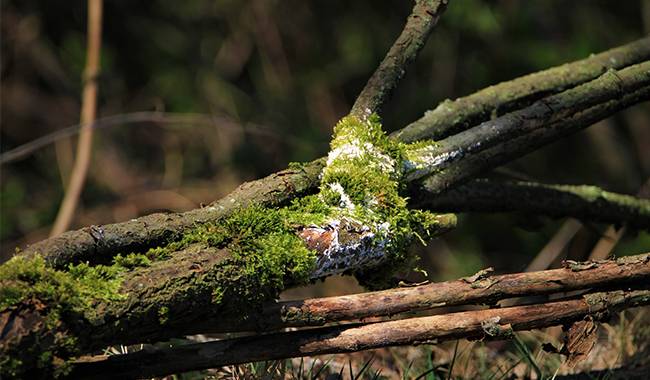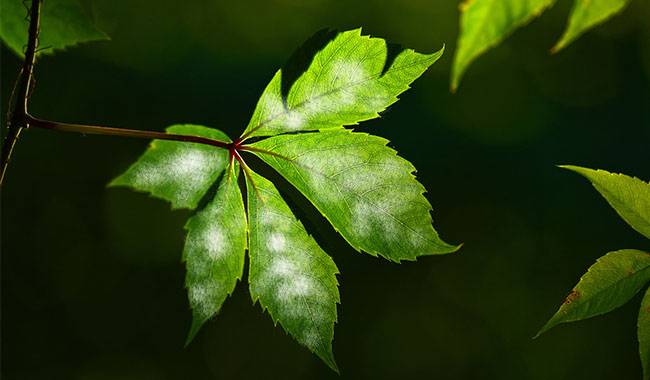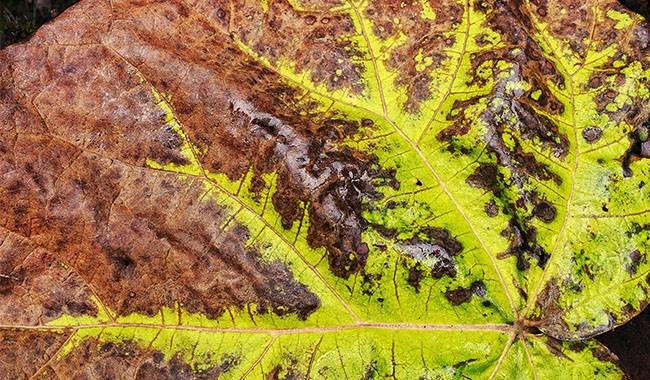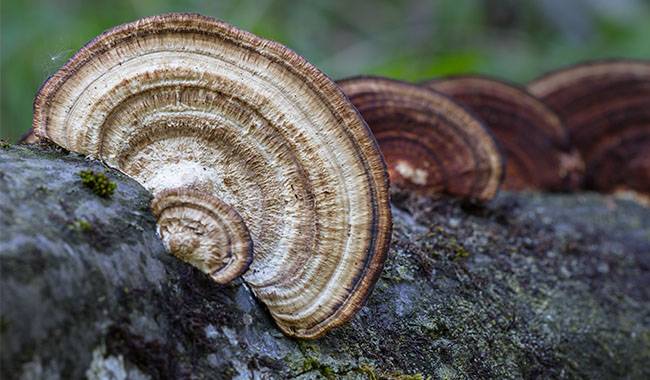
When we say the word “mushroom”, we usually imagine a sunny forest and mushroom pickers with baskets or boiled mushrooms in milk on our plates.
But there are other kinds of mushrooms, mushroom monsters, mushroom parasites. They attack and destroy our trees like veritable predators. They are very dangerous and insidious creatures that slowly and unknowingly destroy our gardens.
What should you do if you find fungi on trees? We will talk about why they grow, what are they, and how to prevent them.
WHY DO MUSHROOMS (FUNGI) GROW ON TREES?
Fungus-parasites breeding grounds, are known for more than 10,000 species and can be any plant, but we will talk about trees. In order to make it possible for parasitic fungi to grow on trees, a necessary condition is the basic donor plant, whose vital activity provides food for the fungus.
Damage to the bark, open wounds is always a risk for the infestation of fungal spores on the tree. They may be primary cracks – frost moths, which usually form during severe frosts.
Bark cracks can also occur during sudden temperature fluctuations, and bark burns in early spring.
During very harsh winters, areas of bark peel off, cracks appear between branches and trunks, and branches break off. Poorly wrapped trunks or branches and various other injuries are also risk factors for infection.
Parasitic fungi are dangerous, first of all, because they are insidious. The tiny spores of the fungus come into contact with the damaged bark surface, attach there, form mycelium, and adhere to the tree.
The fungi multiply and penetrate deep into the wood, slowly destroying its structure and making it lose and corky.
It is impossible to detect an infestation in the initial stages of the tree because the mycelium develops inside the tree for several years.
And only after the appearance of the substrates of the parasitic fungus on the surface of the bark, when a large part of the tree has been destroyed, we can start the treatment and try to prolong the life of the pet.
WHAT ARE THE PARASITIC FUNGI ON TREES?
Parasitic fungi are classified according to the choice of host plant they live on, and how they reproduce. Fungi that grow on tree bark can be classified into different morphological categories.
Based on their degree of specialization, parasitic fungi can be divided into two groups: specialized fungi with limited host selection and parthenogenic fungi with unrestricted host selection.
The fungi that degrade wood are called xylotrophs. xylotrophs secrete special enzymes that alter the structure of the wood, on which the fungi feed, thus obtaining important nutrients from the tree.
Most species of xylotrophs have a broad, flat cap with no stalk or a very small stalk, and the mushroom’s body is usually dense and hard. Some species of woody fungi can be very difficult to separate from the trees on which they are parasitic.
The most common parasitic fungi are ergot, rust, blunt horn, and botrytis. The most common fungus parasitic on fruit trees is Trichoderma.
These are perennial wood parasites, numbering over 100 species, which look absolutely different and can come in different sizes and colors.
Trumpet mushrooms are cap-stalked (sessile) mushrooms, most often with hoof-shaped and mushroom-narrow structures that are usually very hard. Usually, the mushroom’s substrates grow along the trunk, one above the other, but may also settle on tree branches and roots.
On the underside of the crown of the fungal body, there are small tubular spores. The spores mature by August and if the mushroom cap is not removed in time, wind, insects, and rain can disperse the dangerous particles throughout the garden.
Trees infected with corkscrews eventually become weak, with hollows in the trunk and branches that break easily, and the life span of such trees declines dramatically.
Decay is formed where the wood is damaged and it is subdivided into white and brown. If the fungus germinates into the wood, it is no longer possible to prevent its growth. Inevitably, infected trees will die sooner or later.
Polypore is found everywhere in the United States and surrounding countries, and they do not fear any natural disasters because they live in the trunk of the tree. Younger trees are less likely to be infested with the parasite, they are more vigorous and heal faster from bark damage.
TYPES OF PARASITIC FUNGI
Different species of Trichoderma prefer different hosts. For example, Phellinus Ignatius is more frequently found on drupes and pear trees. The substrates of the fungus are perennial and increase in size every year.
The color of the upper part is yellowish-brown, grayish-black, and lusterless, with lighter edges. The presence of black veins and white heart rot in the wood indicates that the tree is infested.
Phellinus tuberculosis appears on plums, bird cherry, hawthorn, and sometimes on apple or pear trees. when a tree is infested in this way, its trunk and branches dry out quickly.
The fungus has hoof-shaped cysts with velvety upper parts covered with a smooth shell with rust-colored edges. Infected wood turns yellow with brown streaks, and the rot spreads throughout the trunk and also takes over the roots of the plant.
Older deciduous trees prefer Ganoderma applanatum. it usually appears on the roots or root zone of the tree, and then the white or slightly yellowish decay climbs upward to eat away at the heartwood.
The upper surface of the perennial cotyledons is whitish brown or rusty brown with grooves and wavy edges. The caps are flat and closely spaced.
Fomes fomentarius also settles on weakened fruit trees. The wood of infected trees shows white or light yellow decay, starting from the pith and following the annual rings.
The old mushroom grows to a very large size and looks like a pale gray hoof with grooves and a pale yellow edge.
Laetiporus sulphureus likes to eat cherries. It forms a brown heart rot that spreads rapidly through the wood.
The cotyledons are annual and are connected in a tile-like manner. Their watery fleshy tissue has a wavy, light yellow surface that becomes brittle when hardened.
The annual fungal bodies of Cerioporus squamosus are selected from pear trees. They have a small stalk that is semicircular in shape and flat on top. These mushrooms grow low in clusters. They vary in color from light yellow to brown with dark brown fan-shaped scales.
PREVENTING PARASITIC FUNGI FROM APPEARING ON TREES
Tree parasitic fungi are a real danger to any garden. However, you should not immediately take drastic measures to destroy trees at the first sign of infection. It is always possible to prolong the life of a tree.
Of course, it is easier to prevent a disease than to deal with it later. Therefore, let’s first focus on preventive measures.
A strong tree is not susceptible to a variety of problems, which means that the tree needs to be fed, watered, properly cared for, and dry branches, flaking and peeling bark removed in a timely manner.
Before winter painting, remove the old peeling bark with a wooden stick to avoid damaging the trunk. Special attention should be paid to the joints between large branches and trunks.
Wounds, cracks, and broken branches should be treated as soon as they appear. This can be done with 3% copper sulfate and garden brew.
The bark should be protected from all kinds of damage, taking into account your climate zone, the possibility of sudden changes in temperature, severe frosts, or the possibility of rodents damaging the tree.
As a precautionary measure, you can spray the tree with a 5% solution of iron sulfate when there are no leaves on the branches.
WHAT SHOULD I DO IF I FIND A PARASITIC FUNGUS ON TREE?
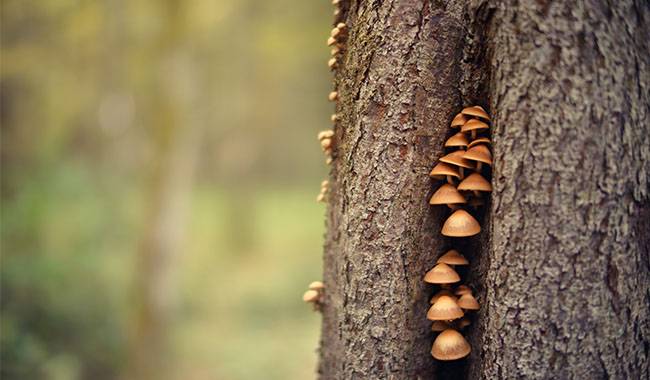
If despite all efforts, a parasitic fungus appears on a tree in your garden, it is necessary to take immediate action. The presence of substrates on a tree trunk means that the fungus has attacked at least half of the trunk.
A healthy, strong tree will last another five or six years, and then it will die anyway. Therefore, our task is, first, to prolong the fruiting period of the tree and, second, to make every effort not to infect other trees.
It is necessary to check the trees no later than July because in August the spores begin to mature.
First of all, as soon as the fungal bodies are found, they should be cut off together with the decaying bark using a sharp horticultural knife, making sure to put a plastic sheet or thick cloth under the tree beforehand to prevent the material from falling to the ground.
The resulting wound should be cleaned until the wood is stronger. After that, everything should be collected and burned. Only after a thorough cleaning can sanitation work begin.
It is also necessary to pay attention to the extent and location of the infestation. If trout appear on the stems, then such a tree will not last more than three years.
In this case, the trunk is best cut to the bottom, cleaned, thoroughly coated with three percent copper sulfate (30 grams per 1 liter of water), dried, and fixed with cement.
If the fungus appears on the branch, it is necessary to cut the branch below the level of the mushroom exit. If you can see decay on the cut branch, it means that the infestation went down.
Such large branches, or trunks that have grown out, are cut out in a circular pattern, all the way to the base of the tree.
The usual protocol for treating small areas of the cut is this: we clean the rotten wood, treat it with a strong solution of three to four percent copper sulfate, dry it sufficiently and then laminate it with garden varnish.
The problem is that in a few years the garden varnish will decompose and the fungal disease will manifest itself more strongly.
I suggest trying a slightly different approach to treating the affected area. After scraping, let’s use a strong solution of a preparation called dry peat-humus fertilizer (bioactive substance).
This is a microbial biological preparation that fights pathogenic microflora, strengthens the plant, and increases its resistance to all types of decay.
Ten grams of the biological preparation was diluted in 1 liter of water and all infected parts of the tree were immersed to the maximum possible depth.
We also applied it to the bark, branches, and trunks of nearby trees, on previously cut branches, cracks, trunk joints, and all places where parasitic fungi should occur.
After treating the tree with a humus fertilizer solution, it was allowed to dry sufficiently for up to two days. Then wash all the bark with a solution of copper sulfate at a concentration of 3% and apply it with a brush or sprayer.
Instead of copper sulfate, a soda solution can be used: dissolve 100 g of soda in 8 liters of hot water, pre-wash and then soak all the bark in it. Let the tree dry for a few days, then paint it white and add repellent.
It is a very good idea to apply a paste called “wound disinfectant and healing paste” to the affected and potentially dangerous areas. This putty paste is used to tighten wounds, disinfect and protect open fissures and incisions.
Large cuts and lesions are protected with a cement putty: 1:1 copper sulfate solution of cement and sand. Or as follows: after initial scraping and treatment, putty made of clay and cowpea in a ratio of 1:1.
After treatment, it is necessary to control diseased trees at least twice a year – in spring and at the end of summer. Then even an infected tree will please you with its fruits for more than 10 years.
Love your garden and take care of it. It will give a great reward to you.





